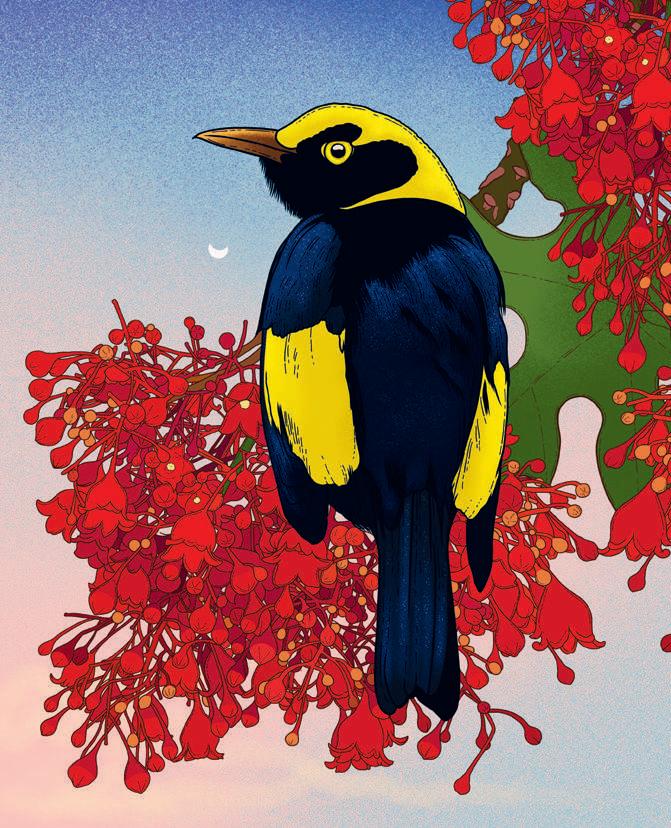
1 minute read
Harlequin Mistletoe
~ Lysiana exocarpi ~
Nga tja (the berries) in the Pitjantjatjara/Yankunytjatjara language
Advertisement
LORANTHACEAE
The Harlequin sits at the parasitic family table with our flaming orange Christmas Tree (see p. 145). The Australian floral landscape is brimming with tricksters dabbling in mimicry, from the ground-dwelling Orchids to the canopy swinging Mistletoes. This parasitic guest is considered a stem hemiparasite that hooks into the branch of its victim and spreads out in its canopy. It attaches itself via a haustorium, which is a root-like structure that slices into the deep tissue of its host, effectively tapping into the stream of water and nutrients. This ‘roots’ the Harlequin Mistletoe to the plant, effectively replacing the need for terrestrial roots. If two plants sharing the same nutrient source sounds like enough of a party, the Harlequin is also known as an epiparasite, meaning it can attach itself to another parasite (such as an Amyema species) that is already attached to a host. The Harlequin’s appetite varies considerably from Eucalypts to Acacias as well as non-native species. Its delicious sweet and sticky seeds are eaten by Mistletoebirds (Dicaeum hirundinaceum), who then deposit a sticky-seedy mess onto a favoured host, ready for germination. The Harlequin Mistletoe would not exist without this relationship.
WHERE TO LOOK
The Harlequin Mistletoe can be seen in the canopies of its victims in the arid and temperate regions of all mainland states. It enjoys Mallee bushland, open forest and woodlands from Lake Carnegie in Western Australia to the Hunter Valley in New South Wales.
Locations → Queensland: Warracoota Circuit Drive in Diamantina National Park; Victoria: Mount Korong Nature Conservation Reserve; SA: Ikara–Flinders Ranges National Park, Australian Arid Lands Botanic Garden, Onkaparinga River National Park and Watts Gully Native Forest Reserve; WA: Mount Beadell on the Gunbarrel Highway.
FEATURES
The semi-parasitic flowering plant blends into the foliage of its host, with a proclamation of 5cm long red flowers that are tipped with green. The edible berries are around 1cm in size, each containing one seed, and will be red, soft and slightly translucent when ripe.
FLOWERING SEASON
Summer and autumn → Harlequin’s red flowers can be seen from December to May.
TRADITIONAL USES
The sticky berries, known as Nga tja in the Pitjantjatjara/Yankunytjatjara language, are known to be eaten and especially favoured by children.










